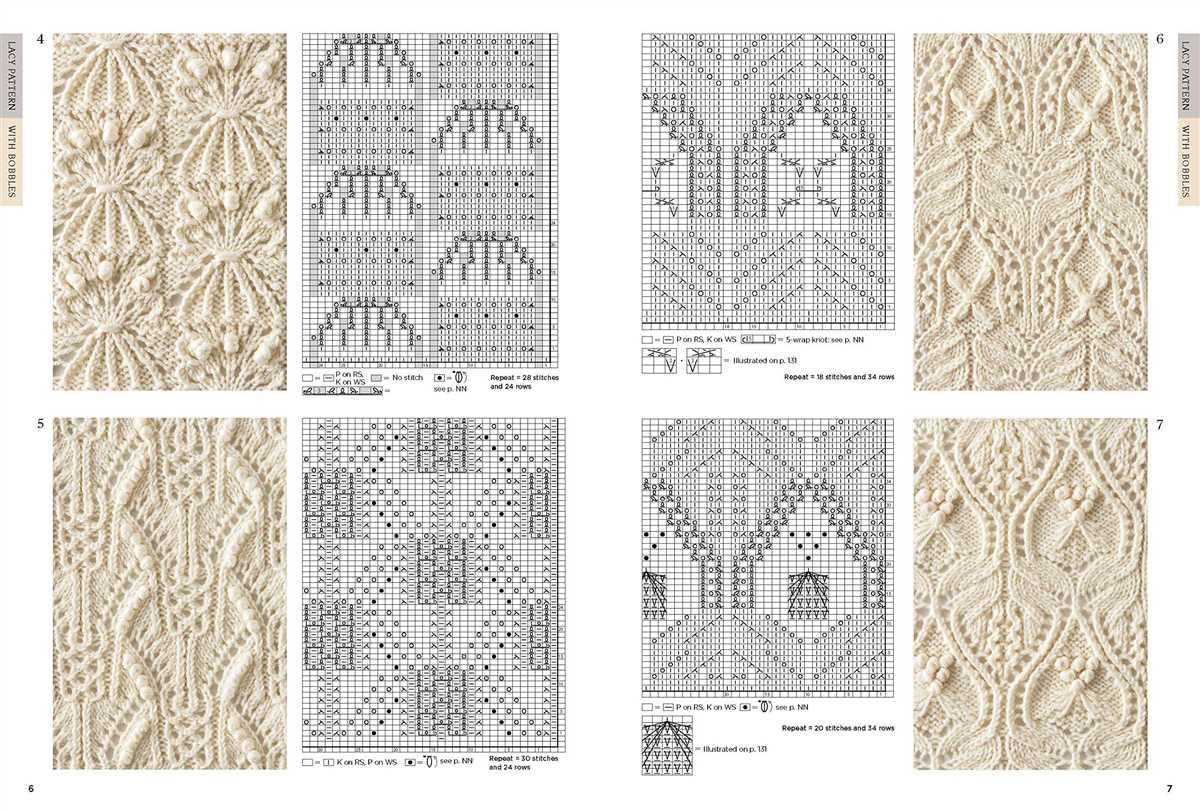
Knitting is a popular craft that has been enjoyed by people all over the world for centuries. Each culture has its own unique knitting traditions and techniques, and one of the most distinctive and intricate styles is Japanese knitting. Japanese knitting stitch patterns are renowned for their beauty and complexity, making them a favorite among knitters looking to challenge themselves and create stunning garments and accessories.
What sets Japanese knitting stitch patterns apart is their attention to detail and precision. These patterns often feature intricate lacework, textured stitches, and delicate colorwork that result in highly intricate and visually stunning designs. Many of these patterns draw inspiration from nature, incorporating elements such as flowers, leaves, and geometric shapes to create intricate motifs that are truly breathtaking.
Another special characteristic of Japanese knitting is the use of charted patterns. Unlike written instructions commonly used in Western knitting patterns, Japanese patterns rely heavily on visual charts that show each stitch and pattern repeat in a clear and concise manner. This makes Japanese knitting patterns highly accessible to knitters of all skill levels, as they allow for easy understanding and interpretation.
Understanding Japanese Knitting Stitch Patterns
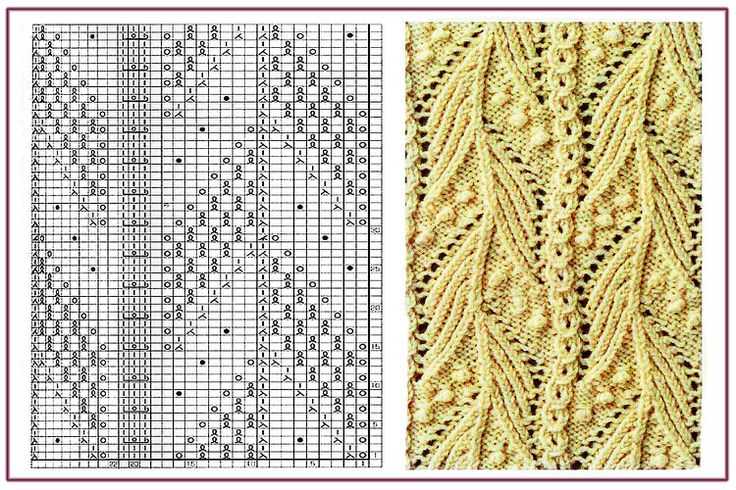
Japanese knitting stitch patterns are known for their intricate designs and attention to detail. These patterns often incorporate unique stitch combinations and techniques that result in beautiful and complex pieces. Understanding how to read and interpret these patterns can open up a world of creativity for knitters.
Chart Symbols: One of the key elements of Japanese knitting stitch patterns is the use of chart symbols to represent different types of stitches. These symbols are typically easy to understand and can be found in charts that accompany the written instructions. Some common symbols include circles for knit stitches, crosses for purl stitches, and vertical lines for yarn overs.
Pattern Repeats: Japanese knitting patterns often incorporate repeat sections that are indicated by specific instructions or symbols. These repeats can range from simple two or four-row repeats to more complex sequences. It’s important to carefully follow the instructions for each repeat section to ensure the pattern is executed correctly.
Stitch Combinations: Japanese knitting patterns often feature unique stitch combinations that result in intricate and textured designs. These combinations may include cables, lace, or twisted stitches. Understanding how to execute these stitches and how they interact with neighboring stitches is key to reproducing the pattern accurately.
Pattern Charts: Many Japanese knitting patterns include charts that visually represent the pattern design. These charts provide a visual guide for each row or round of the pattern, allowing knitters to easily see how the stitches should be worked. Reading and understanding these charts is essential for successfully knitting Japanese patterns.
- Japanese knitting stitch patterns offer a wealth of inspiration and creativity.
- Understanding the key elements of these patterns, such as chart symbols, pattern repeats, stitch combinations, and pattern charts, is essential for successfully knitting these intricate designs.
- By familiarizing oneself with these elements and practicing the techniques involved, knitters can unlock a world of beautiful and unique patterns.
The History of Japanese Knitting
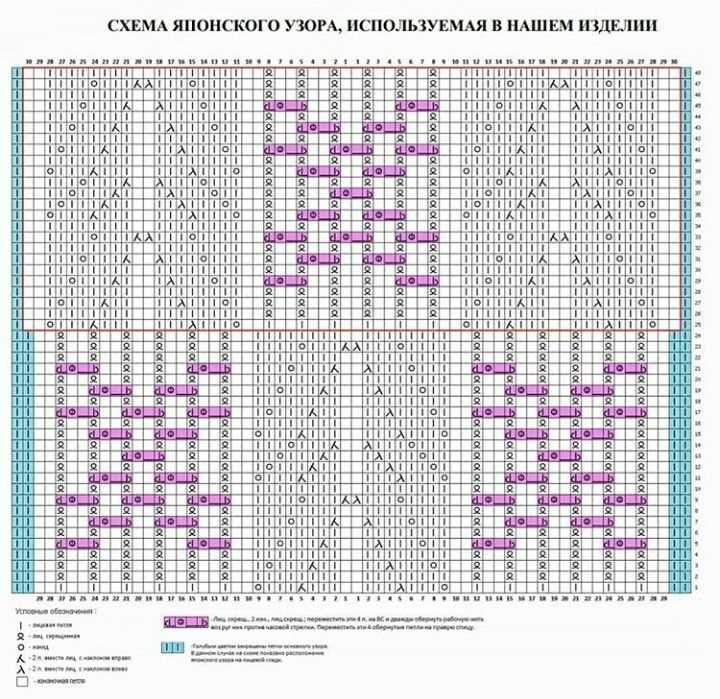
Knitting has a long and rich history in Japan, dating back centuries. While the exact origins of knitting in Japan are not well-documented, it is believed to have been introduced to the country from China and the Middle East. The art of knitting quickly gained popularity among the Japanese people, who adapted and developed their own unique techniques and patterns.
During the Edo period (1603-1868), knitting flourished in Japan. Knitting was not only a practical skill for making warm clothing, but it also became an important hobby and form of artistic expression. Women of noble and samurai classes were particularly skilled in knitting intricate designs, often incorporating traditional motifs and symbols into their work.
One of the defining features of Japanese knitting is the use of complex stitch patterns. Japanese knitters are known for their attention to detail and precision, creating intricate designs using various combinations of knit and purl stitches. These stitch patterns are often influenced by nature, with motifs inspired by flowers, trees, and animals.
Japanese knitting also has its own unique set of knitting symbols and charts, which differ from the commonly used charts in Western knitting. These symbols allow knitters to easily follow complex stitch patterns and create beautiful, intricate designs.
Today, Japanese knitting continues to be highly regarded for its intricate designs and attention to detail. Knitting enthusiasts from around the world seek out Japanese knitting books and patterns to learn and incorporate these unique techniques into their own work. The rich history and tradition of Japanese knitting continue to inspire and influence knitters worldwide.
Exploring Different Types of Japanese Knitting Stitches
If you’re a knitting enthusiast looking to expand your repertoire of stitch patterns, Japanese knitting stitches offer a rich variety of options to explore. These stitches are known for their intricate designs, attention to detail, and delicate texture. Whether you’re creating a cozy scarf, a stylish sweater, or a decorative accessory, incorporating Japanese knitting stitches can add a unique touch to your projects.
Cable Stitch Patterns: One of the most popular types of Japanese knitting stitches is the cable stitch pattern. This technique involves crossing stitches over each other to create a twisted, interlocking design. Cable stitches can be simple, with just a few stitches crossing over, or more complex, with multiple cables intertwining. The resulting texture adds depth and visual interest to any knitted item.
Lace Stitch Patterns: Another beautiful option in Japanese knitting is lace stitch patterns. These delicate stitches create an open, airy fabric with intricate designs reminiscent of lace. Lace stitch patterns often feature motifs such as flowers, leaves, or geometric shapes. They are perfect for creating lightweight garments or accessories, adding a touch of elegance and femininity to your knitting projects.
Colorwork Stitch Patterns: Japanese knitting also offers a range of colorwork stitch patterns, which involve using multiple colors of yarn to create patterns and motifs. From simple stripes to intricate Fair Isle designs, colorwork stitches can add pops of color and visual interest to your knitting. By using different color combinations and techniques, you can create unique and eye-catching knitted pieces.
Texture Stitch Patterns: Japanese knitting stitches also excel in creating texture. From bobbles and popcorn stitches to honeycomb patterns, these stitches add depth and tactile interest to your knitting. Texture stitch patterns are great for creating warm and cozy garments, as well as adding a tactile element to accessories like hats and scarves.
By exploring different types of Japanese knitting stitches, you can expand your knitting skills and create unique, beautiful pieces. Whether you’re drawn to the elegance of lace, the complexity of cables, the vibrancy of colorwork, or the texture of bobbles, there’s a Japanese knitting stitch pattern out there to suit your style and preferences. So grab your needles, some beautiful yarn, and start experimenting with these captivating stitches!
How to Read and Interpret Japanese Knitting Charts
A skillful knitter can take any knitting chart and create beautiful projects, regardless of the language it is written in. However, if you are new to Japanese knitting charts, it may seem intimidating at first. Don’t worry, with a little practice and understanding, you will be able to read and interpret them effortlessly.
1. Understand the symbols: Japanese knitting charts use symbols to represent different stitches and techniques. Some common symbols include circles, squares, triangles, and lines. Each symbol corresponds to a specific stitch or action, such as knit, purl, yarn over, or decrease. Familiarize yourself with these symbols before you start working on a pattern.
2. Read from right to left: In Japanese knitting charts, you read the chart from right to left, just like you would when knitting. This means that the first row of the chart corresponds to the right side (RS) of your knitting, and the second row corresponds to the wrong side (WS).
3. Pay attention to the key: Most Japanese knitting charts include a key that explains the symbols used in the chart. Take the time to carefully study the key before you begin knitting. It will provide important information about the stitches and techniques used in the pattern.
4. Use a row counter: To keep track of your progress while working with a Japanese knitting chart, it is helpful to use a row counter. As you complete each row, move the row counter to the next number to ensure that you don’t lose your place in the chart.
5. Take advantage of repeats: Japanese knitting charts often use repeats to conserve space and make the pattern easier to follow. Pay attention to any repeat symbols or numbers indicated in the chart, as they will help you understand the overall pattern and make your knitting more efficient.
6. Seek clarification if necessary: If you come across any symbols or instructions in a Japanese knitting chart that you don’t understand, don’t hesitate to reach out for help. Online knitting communities and forums are great resources where you can ask questions and get guidance from experienced knitters.
With these tips in mind, you are ready to take on Japanese knitting charts with confidence. Remember, practice makes perfect, so don’t be discouraged if it takes a few tries to get the hang of it. Soon enough, you will be creating beautiful projects using the intricate stitch patterns that Japanese knitting is famous for.
Tips and Tricks for Mastering Japanese Knitting Techniques
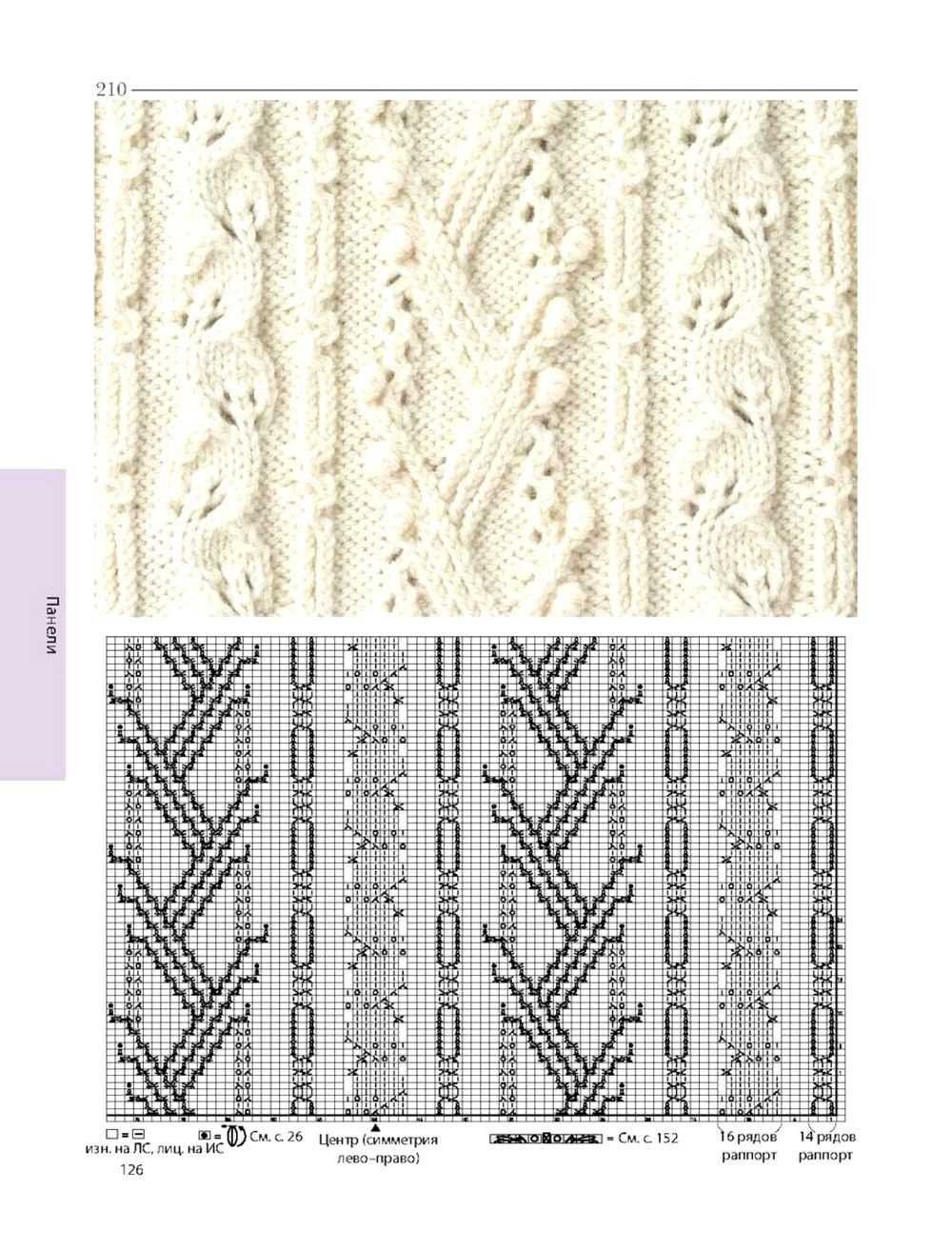
Japanese knitting techniques are known for their intricate patterns and delicate designs. If you’re interested in learning these techniques, here are some tips and tricks to help you master them:
1. Start with Simple Patterns
When first diving into Japanese knitting, it’s best to start with simple patterns. This will allow you to familiarize yourself with the unique symbols and charting methods commonly used in Japanese knitting. Look for patterns that have a clear and straightforward design, such as basic lace or cable patterns.
2. Study the Stitch Symbols
Japanese knitting uses a variety of stitch symbols that are different from those used in Western knitting patterns. Take the time to study and understand these symbols before attempting any complicated patterns. Familiarize yourself with the different types of decreases, yarn overs, and other stitch symbols commonly used in Japanese knitting.
3. Use a Stitch Dictionary
A stitch dictionary can be a valuable tool when learning Japanese knitting techniques. It provides a visual reference for the various stitch patterns and their corresponding symbols. Keep a stitch dictionary on hand for easy reference as you work on your projects.
4. Follow Clear Instructions
When working on a Japanese knitting pattern, make sure to carefully read and follow the instructions provided. Japanese patterns often include helpful notes and diagrams that guide you through each step of the knitting process. Don’t skip over any instructions, as they may provide important details or tips for achieving the desired result.
5. Practice Patience and Persistence
Mastering Japanese knitting techniques takes time and practice. Don’t get discouraged if you make mistakes or struggle with certain patterns. Take it one step at a time and be patient with yourself. With practice, you’ll gradually become more comfortable with the techniques and be able to tackle more complex designs.
6. Join a Knitting Community
Connecting with other knitters who are also interested in Japanese knitting can be a great way to learn and improve your skills. Joining a knitting community or online forum will give you the opportunity to ask questions, share tips and tricks, and find support and encouragement as you continue your knitting journey.
By following these tips and tricks, you’ll be well on your way to mastering Japanese knitting techniques and creating beautiful, intricate designs.
Creating Texture with Japanese Knitting Stitch Patterns
When it comes to knitting, Japanese stitch patterns are renowned for their intricate designs and ability to create beautiful textures. These patterns often incorporate a combination of different stitches and techniques to create unique and eye-catching designs that add depth and complexity to any project. Whether you’re a beginner or an experienced knitter, exploring Japanese knitting stitch patterns can open up a world of creative possibilities.
One of the key features of Japanese knitting stitch patterns is their focus on texture. By combining different types of stitches, such as cables, lace, and slipped stitches, these patterns create a three-dimensional effect that adds visual interest to your knitted fabric. For example, the “bobbles” stitch, also known as the “daisy” stitch, features small, raised puffs that look like tiny flowers. This stitch pattern adds a playful and whimsical element to your knitting.
The “honeycomb” stitch pattern is another popular choice for adding texture to your knitting. This stitch creates a series of interlocking hexagons that resemble the cells of a honeycomb. The resulting fabric has a unique, geometric texture that is both visually appealing and tactile.
Japanese knitting stitch patterns also often feature intricate lace designs. Lace knitting involves creating decorative, openwork patterns by increasing and decreasing stitches in specific ways. Japanese lace patterns are known for their delicate and intricate motifs, such as floral and leaf motifs, that can add a touch of elegance and femininity to your knitting.
In conclusion, Japanese knitting stitch patterns are a fantastic way to add texture to your knitting projects. Whether you’re looking to create a cozy sweater, a stylish accessory, or a decorative home item, exploring Japanese stitch patterns can offer an endless array of design possibilities. Don’t be afraid to experiment and incorporate these patterns into your knitting repertoire for truly unique and textured creations.
Adapting Japanese Knitting Stitch Patterns for Your Projects
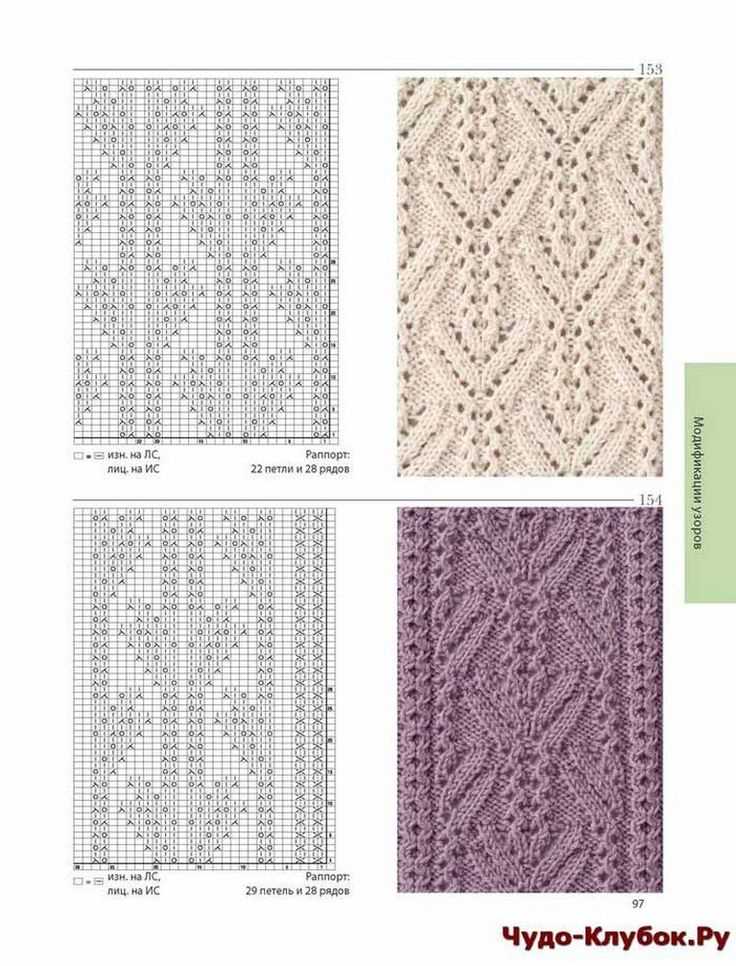
If you’re a knitter looking for new and interesting stitch patterns to incorporate into your projects, it’s worth exploring the vast array of Japanese knitting stitch patterns available. Japanese knitting stitch patterns are known for their intricate designs and attention to detail, making them a popular choice among knitters worldwide.
Adapting Japanese knitting stitch patterns for your projects allows you to add a unique touch to your knitting. Whether you’re knitting a sweater, scarf, or hat, incorporating Japanese stitch patterns can elevate your project to a whole new level.
Understanding Japanese Knitting Charts
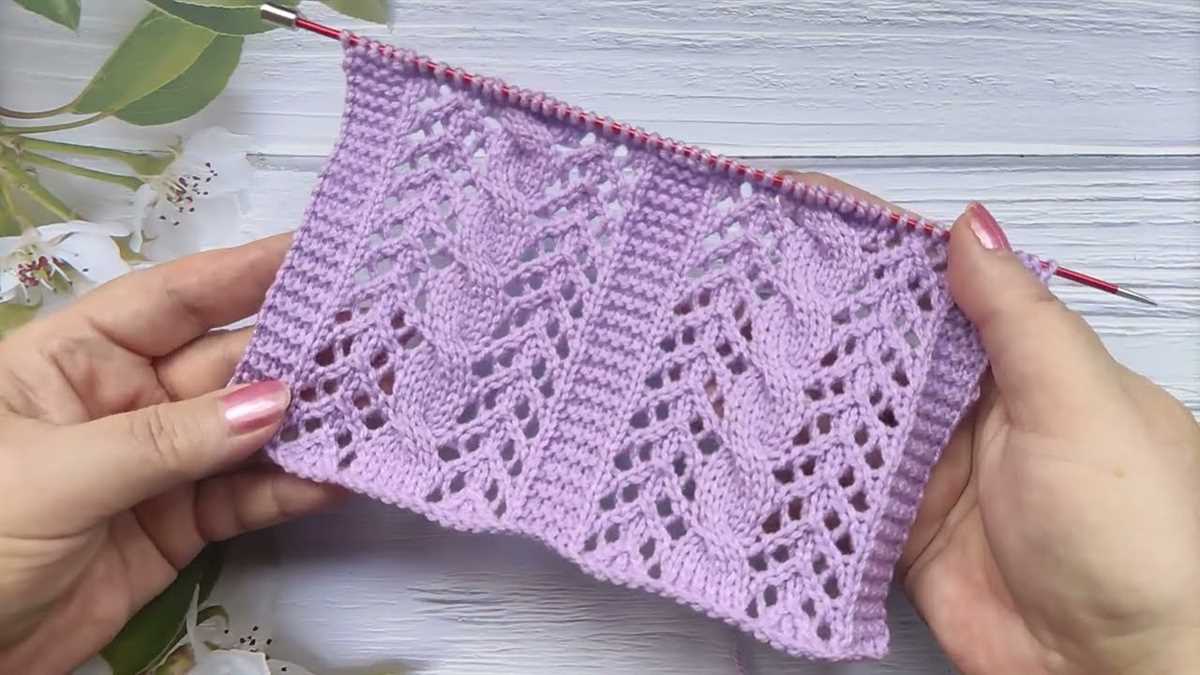
One of the first steps to adapting Japanese knitting stitch patterns is to familiarize yourself with the charts commonly used in Japanese knitting patterns. Japanese knitting charts are different from the traditional Western knitting charts, as they use symbols instead of written instructions. These symbols represent different stitch patterns and techniques, and understanding them is crucial to successfully incorporating Japanese stitch patterns into your projects.
While it may take some time to get accustomed to reading Japanese knitting charts, there are many online resources and tutorials available to help you learn. Once you have a good grasp of the symbols and techniques, you’ll be able to easily adapt Japanese knitting stitch patterns to suit your needs.
Choosing the Right Stitch Pattern
Japanese knitting stitch patterns come in a wide variety of designs, from intricate lace patterns to textured cables. When adapting these patterns for your projects, it’s important to choose a stitch pattern that complements your chosen yarn and project. Consider the weight and texture of your yarn, as well as the intended use of the finished item, to ensure that the stitch pattern works well and showcases the yarn’s qualities.
Additionally, you can personalize the stitch pattern by combining different elements from different Japanese knitting stitch patterns. This allows you to create a unique design that reflects your personal style and preferences. Don’t be afraid to experiment and play around with different stitch combinations to find the perfect pattern for your project.
Modifying Stitch Patterns to Fit Your Project
Another important aspect of adapting Japanese knitting stitch patterns is modifying them to fit your project’s measurements. Japanese knitting patterns often provide charts and instructions for specific sizes, but you can easily adjust them to fit your desired measurements by adding or subtracting stitches or rows.
In addition to modifying the stitch pattern’s measurements, you can also modify certain elements to suit your preferences. For example, you can add extra repeats of a lace pattern to make it more intricate or omit certain elements to simplify the design. Feel free to make these modifications as needed to ensure that the adapted stitch pattern enhances your project’s overall aesthetic.
- In conclusion, adapting Japanese knitting stitch patterns for your projects is a great way to add a unique touch to your knitting.
- Familiarize yourself with Japanese knitting charts, choose the right stitch pattern, and modify it to fit your project.
- With a little practice and experimentation, you’ll be able to incorporate beautiful Japanese stitch patterns into your knitting projects.
Japanese Knitting Stitch Patterns for Beginners
When it comes to knitting, Japanese stitch patterns are known for their intricate designs and elegant aesthetic. While they may seem intimidating at first, there are plenty of Japanese knitting stitch patterns that are perfect for beginners. These patterns often use basic stitches like knit and purl, making them accessible to those who are new to knitting.
One popular technique in Japanese knitting is lace knitting. Lace patterns often feature delicate, lacy motifs that create a beautiful openwork effect. These patterns can range from simple eyelet designs to more complex combinations of yarn overs and decreases. By starting with a simpler lace pattern, beginners can learn the basics of lace knitting and gradually progress to more intricate designs.
1. Garter Stitch Diamonds
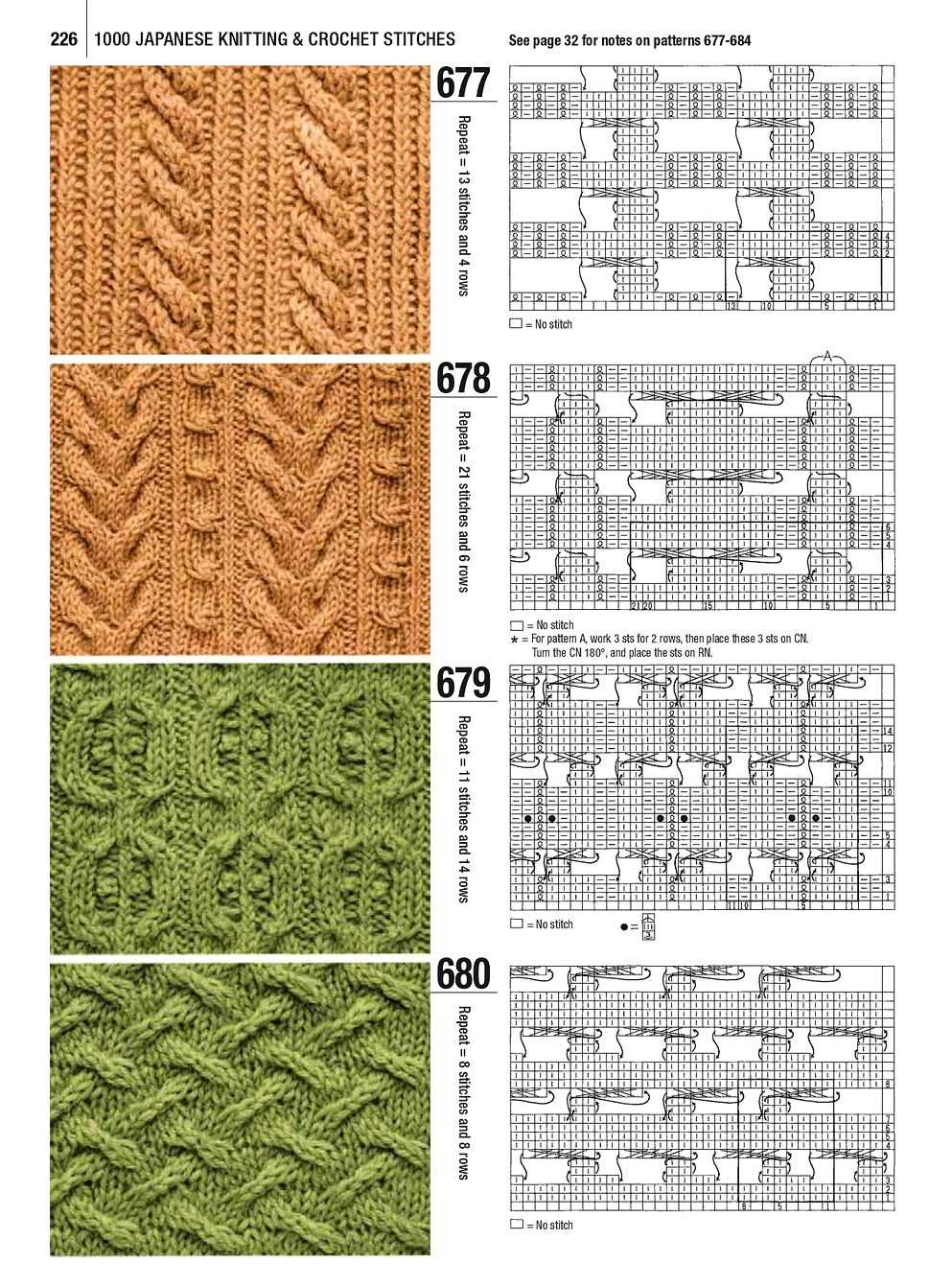
A great stitch pattern for beginners is the garter stitch diamonds. This pattern uses only knit stitches, making it perfect for those who are still mastering the basics. The diamond shapes created by alternating knit and purl rows add visual interest to any knitted project.
2. Seed Stitch Ribbing
The seed stitch ribbing is another easy Japanese stitch pattern that is perfect for beginners. This pattern combines knit and purl stitches to create a textured ribbed fabric. The alternating pattern of knit and purl stitches adds depth and dimension to any knitted garment or accessory.
3. Herringbone Stitch
The herringbone stitch is a classic Japanese knitting pattern that can be easily mastered by beginners. It creates a beautiful, woven texture that resembles the pattern found on herringbone fabric. This stitch pattern is created by knitting two stitches together and then knitting the same two stitches separately. By repeating this pattern, beginners can achieve a professional-looking herringbone design.
These are just a few examples of Japanese knitting stitch patterns that are beginner-friendly. By starting with simpler patterns and gradually progressing to more complex designs, beginners can build their confidence and skill level in Japanese knitting. With practice, they can create stunning and intricate knitted pieces that showcase the beauty of Japanese stitch patterns.
Japanese Knitting Stitch Patterns for Advanced Knitters
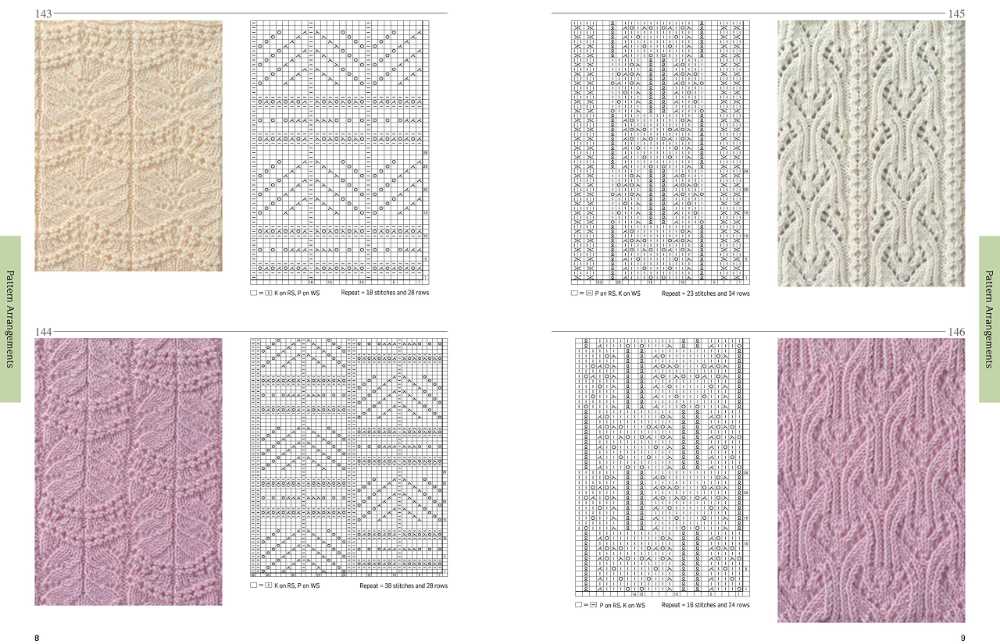
Japanese knitting stitch patterns are known for their intricate designs and complex techniques, making them a perfect challenge for advanced knitters. These patterns offer a unique way to create beautifully detailed textures and motifs in your knitted projects.
One popular Japanese knitting stitch pattern for advanced knitters is the “butterfly stitch.” This stitch creates a delicate and intricate design that resembles fluttering butterflies. The pattern involves using a combination of knit and purl stitches to create the wings and body of the butterflies, resulting in a stunning texture that can be incorporated into various projects such as scarves, shawls, and even sweaters.
Another advanced Japanese knitting stitch pattern to try is the “pine tree motif.” This pattern features a series of intricate cables and twisted stitches that come together to create the shape of a pine tree. The combination of cables and twisted stitches adds depth and dimension to the knitted fabric, making it an eye-catching design element. This pattern can be incorporated into projects like hats, mittens, or even a cozy winter sweater, bringing a touch of nature-inspired beauty to your knitting.
If you’re feeling up for a challenge, the “chrysanthemum lace pattern” is another advanced Japanese knitting stitch pattern that will test your skills. This pattern showcases delicate lacework that is reminiscent of the petals of a chrysanthemum flower. The intricate lace pattern involves a combination of yarn overs, decreases, and double yarn overs to create the intricate petal shapes. The final result is a stunningly beautiful lace panel that can be incorporated into shawls, cardigans, or even as an accent on a knitted dress.
Whether you’re looking to take your knitting skills to the next level or simply enjoy the challenge of working with complex stitch patterns, Japanese knitting stitch patterns for advanced knitters offer a wide range of options. From intricate lacework to detailed motifs, these patterns provide an opportunity to create unique and stunning knitted pieces that are sure to impress.
Incorporating Japanese Knitting Stitch Patterns into Your Designs
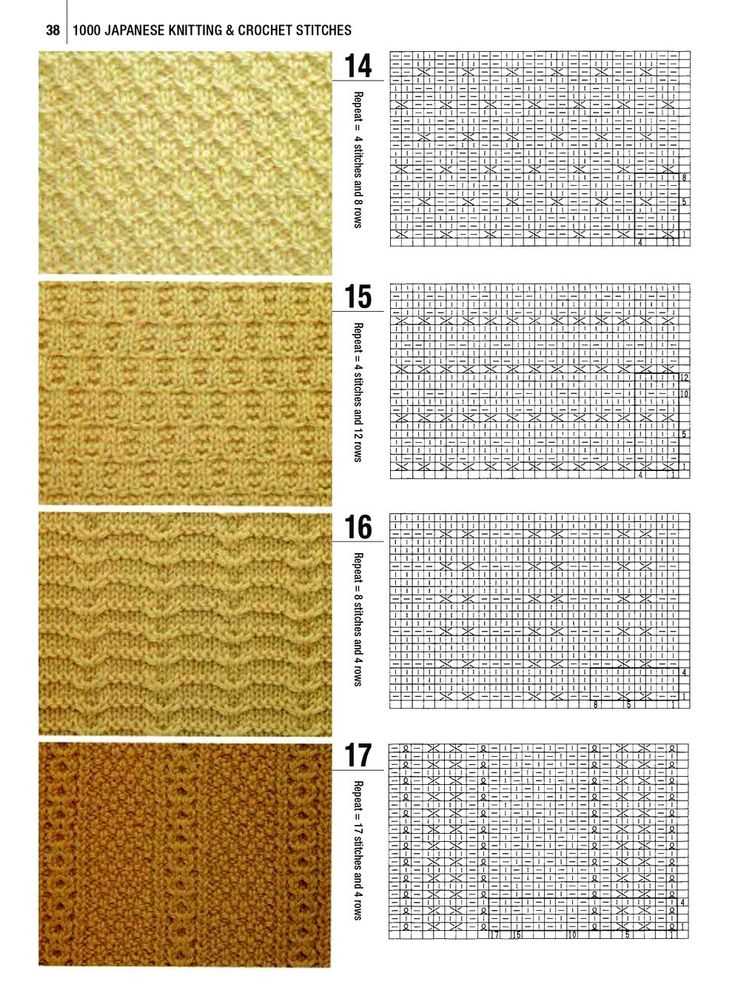
Japanese knitting stitch patterns are not only beautiful and intricate, but they also bring a unique cultural element to your knitting projects. Whether you are a beginner or an experienced knitter, incorporating these patterns into your designs can add an elegant touch and challenge your knitting skills.
When incorporating Japanese knitting stitch patterns into your designs, there are a few things to keep in mind. First, it’s important to choose the right pattern for your project. Consider the type of garment or accessory you are making and choose a pattern that complements its shape and style. For example, lace patterns are often used for shawls and scarves, while cable patterns work well for sweaters and hats.
Here are some tips for incorporating Japanese knitting stitch patterns into your designs:
- Start small: If you’re new to Japanese knitting stitch patterns, start with a small project like a hat or a dishcloth. This will allow you to practice the pattern and become familiar with the techniques before tackling a larger project.
- Experiment with different yarns: Japanese knitting stitch patterns are versatile and can be adapted to different yarns. Try using a fine laceweight yarn for delicate lace patterns or a chunky yarn for bold cables.
- Combine patterns: Don’t be afraid to mix and match different stitch patterns to create a unique design. Consider combining lace and cable patterns or incorporating traditional Japanese motifs into your knitting.
- Add Japanese-inspired embellishments: To enhance the Japanese aesthetic of your design, consider adding embellishments like beads, tassels, or traditional Japanese knots.
Remember to always follow the pattern instructions carefully and practice new techniques before incorporating them into your designs. Japanese knitting stitch patterns can be complex, but with patience and practice, you can create stunning and unique knitted pieces that showcase the beauty of this traditional craft.